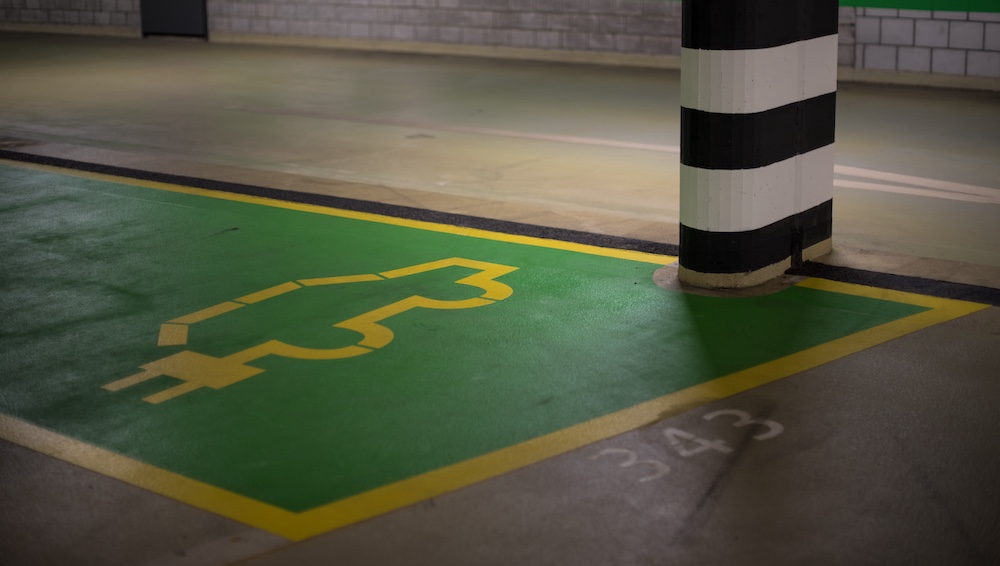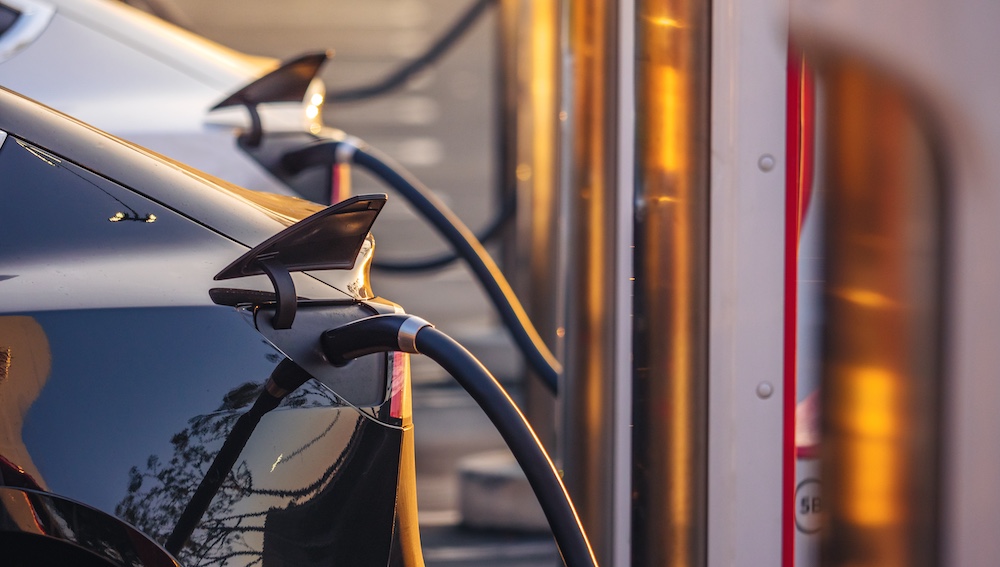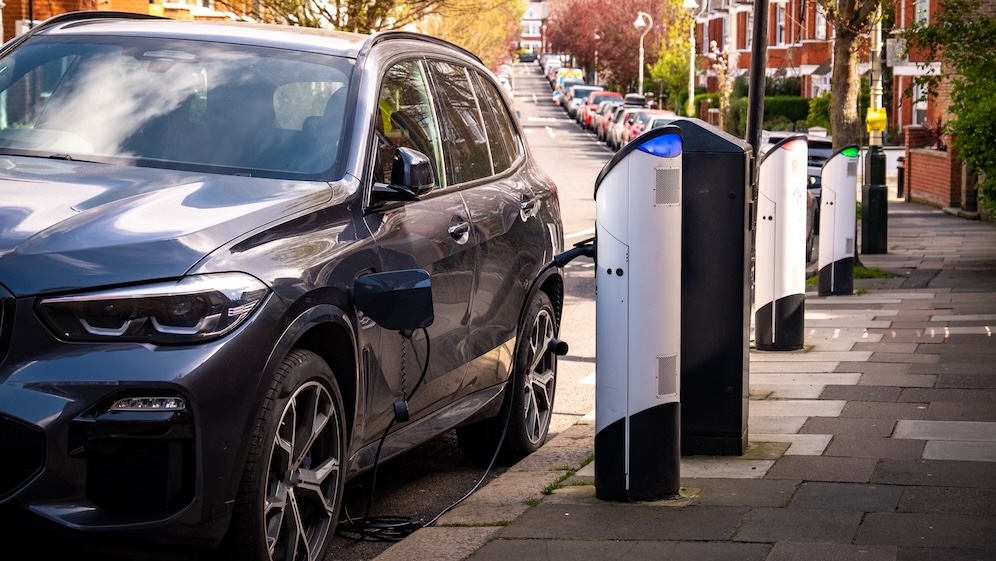EV charging public: Your guide to workplace and public options
While as many as 87% of electric vehicle owners have access to a home wall box for EV charging, public charging stations are becoming increasingly accessible.
Between 2023 and 2024, the UK saw a 45% increase in public EV charging points to 53,600, which is consistent with the government’s predicted delivery of 300,000 charge points by 2030. The industry body responsible for public charge point operators, ChargeUK, has committed to investing over £6 billion in charging infrastructure by that date and doubling the number of charging points available between April 2025 and April 2026.
That means, whether you rely completely on charging your EV in public or occasionally top up your battery at public stations on long journeys, it’s only going to get easier to find a public charge point when you need one.
This guide covers everything you need to know to charge your EV in public – be that at work, your local supermarket, or a motorway service station – helping you overcome range anxiety and feel confident driving your EV for any distance.
Understanding public EV charging points
Public EV charging points refer to electric charging stations made available for public use. They’re becoming increasingly common in public places such as supermarkets, shopping centres, service stations, and public car parks.
Public chargers operate on various charging networks, each with their own charging tariffs. Some networks also offer subscription schemes, which can reduce the cost of charging your EV in public.
Broadly speaking, public EV charging points can be classified into four categories:
- Slow chargers (≤ 7kWh), which are usually found in locations you’re likely to leave your car for longer periods of time, such as your workplace.
- Fast chargers (8-50kWh), often found in supermarket or leisure centre car parks.
- Rapid chargers (50kWh to 150kWh), usually found in locations you’re not likely to stay for long periods, such as service stations.
- Ultra-rapid chargers (150kWh <), which are becoming increasingly common at service stations.
Where possible, use slow and fast chargers day-to-day, and rapid/ultra-rapid chargers only when absolutely necessary to help preserve your EV battery’s health.
How do EV charging stations work?
Once you’ve found a suitable public charging station, follow these steps to charge your EV:
Step one: Plug the charger into your vehicle
Many charging points are tethered, meaning they have a cable attached, so you’ll need to double-check that the cable is compatible with your vehicle. Some public EV charging points are untethered, meaning you can connect using your own cable.
Step two: Authenticate
Follow the authentication instructions on the charger. This might include verifying your payment method using contactless payment through your phone or card, or an app associated with the charging network.
Step three: Charge
Your vehicle will begin charging. You can usually monitor your charging session via an app. Through smart charging, you may be able to set the duration of your charging session or your desired level of charge. You can also stop the session manually using controls on the charging point itself or on the app.
Step four: Unplug
Once your session has ended, you can unplug your vehicle and replace the charging cable neatly, ready for the next person to use.
Workplace EV charging stations explained
An increasing number of businesses are installing workplace EV charging stations, allowing staff to charge their vehicles while they’re at work. Offering workplace charging can support employee engagement and recruitment, as well as encourage EV adoption among staff, thereby supporting ESG goals.
The UK Government’s Workplace Charging Scheme (WCS) supports businesses, charities, and the public sector cover the cost of installing up to 40 workplace EV charging stations by providing a grant of up to £350 per socket.
EV charging stations at the workplace provide convenient commuter EV charging, eliminating the difficulty of finding other public EV charging points nearby. Many workplaces offer subsidised or even free charging to employees, which can be managed through smartphone charging apps. Other workplace EV incentives, such as salary sacrifice, can reduce the cost of leasing an electric vehicle, making employee EV adoption even easier.
Tips for charging efficiently in public
While charging your EV at home is often seen as the most convenient way to top up your battery, public EV charging points can be a suitable alternative – especially when used wisely.
Follow these tips to get the most out of your public charging sessions.
Plan your route
EV journey planning, particularly when travelling longer distances, can help manage range anxiety and maximise efficiency. Services such as Zapmap allow you to locate public EV charging points on your route and see charging rates and pricing details for each charger, helping you save time and money.
Check real-time availability
Platforms like Zapmap also provide real-time charger availability information. This feature can help you find an EV charging point efficiently, without the need to spend time checking multiple stations for a free spot.
Use off-peak charging
Many charging network providers offer members reduced rates at off-peak times, such as late at night or early in the morning. Taking advantage of cheaper rates available through membership schemes, particularly during off-peak hours, can help bring down the cost of public charging.
Opt for smart charging
Many public EV charging points, especially those installed at workplaces, are compatible with smart charging. This allows you to manage your charging session using a mobile app and set preferences such as the desired charge level. Smart charging can also be more cost-effective as it can automatically stop and start your charging session to take advantage of the best energy rates.
Respect charging station time limits
To ensure fair usage, some public EV charging points impose time limits. It’s important to note and follow these restrictions, not only for proper charging etiquette but also to avoid incurring fines for overstaying.
Conclusion: EV charging in public
An increasing number of EV charging public stations are becoming available across the UK, helping to alleviate range anxiety on journeys of any length.
Public EV charging points are also becoming easier and cheaper to use. Contactless payments and smart charging options provide a convenient and cost-effective alternative to home charging, whether you’re charging up your battery while shopping or topping up for a long journey on the motorway.
As more and more workplaces take advantage of incentives such as the WCS to implement workplace EV charging stations, employees may also find that charging their EV at work is a much cheaper (or sometimes even free) option for powering their vehicle’s battery.
For more advice on the cost of charging an electric vehicle, available grants and incentives, and many other topics, visit the EV Hub.
Public EV charging FAQs
Can I use any public EV charging point with my EV?
You’ll need to check that the public EV charging point’s plug is compatible with your electric vehicle. The most common plug in the UK is the Type 2 connector, which you’ll find on most EVs and chargers. It’s also a good idea to use slower charging speeds when you can, and save rapid or ultra-rapid chargers for when you’re short on time.
How much does it cost to charge at a public charger?
Charging tariffs vary depending on the network and charging speed. For public charging points under 50kWh, Zapmap reports an average charge of 51p per kWh (£26.52 to fully charge a 52kWh battery). The average cost to use public EV charging points over 50kWh increases to 76p per kWh (£39.52 to fully charge a 52kWh battery).
Are workplace EV charging stations free to use?
The cost of using workplace EV charging stations varies depending on your employer’s policy. Some offer free EV charging for employees, whereas others offer subsidised rates. Either way, charging your EV at work is often cheaper overall than using other public charging stations.
How do I pay at a public EV charging point?
The majority of public charging stations offer contactless payment using a credit or debit card or your smartphone. Many also link to a charging app, allowing you to manage and pay for your charging session using your phone. Some charging networks also offer membership schemes that you can pay for monthly.
Can rapid charging damage my battery?
If used too often, rapid chargers can cause damage to your battery and reduce its lifespan. However, they’re suitable for occasional or emergency use. To help preserve the lifespan of your battery, use slow or fast chargers for everyday use and save rapid or ultra-rapid chargers for when absolutely necessary.





